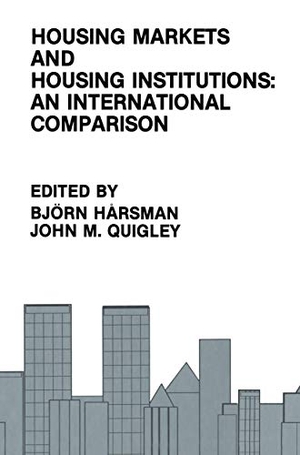Für statistische Zwecke und um bestmögliche Funktionalität zu bieten, speichert diese Website Cookies auf Ihrem Gerät. Das Speichern von Cookies kann in den Browser-Einstellungen deaktiviert werden. Wenn Sie die Website weiter nutzen, stimmen Sie der Verwendung von Cookies zu.
Cookie akzeptieren
Housing Markets and Housing Institutions: An International Comparison
- Springer Netherlands
- 2012
- Taschenbuch
- 364 Seiten
- ISBN 9789401057424
International comparisons of economic institutions and government poli cies are fraught with difficulties. After1he selective barriers of language and culture are overcome, differences in programs and outcomes are far more subtle than those that can be revealed by highly aggregated national data. Rela tively "soft" comparisons are the norm in international comparative research. This is particularly true in comparative analyses of housing and the operation of housing markets. Housing markets are local or regional in character, and the effects of government programs on market outcomes depend upon important economic characteristics of the local environment. Moreover, the institutions that influence the production, distribution, and consumption of housing
Mehr
Weniger
zzgl. Versand
in Kürze